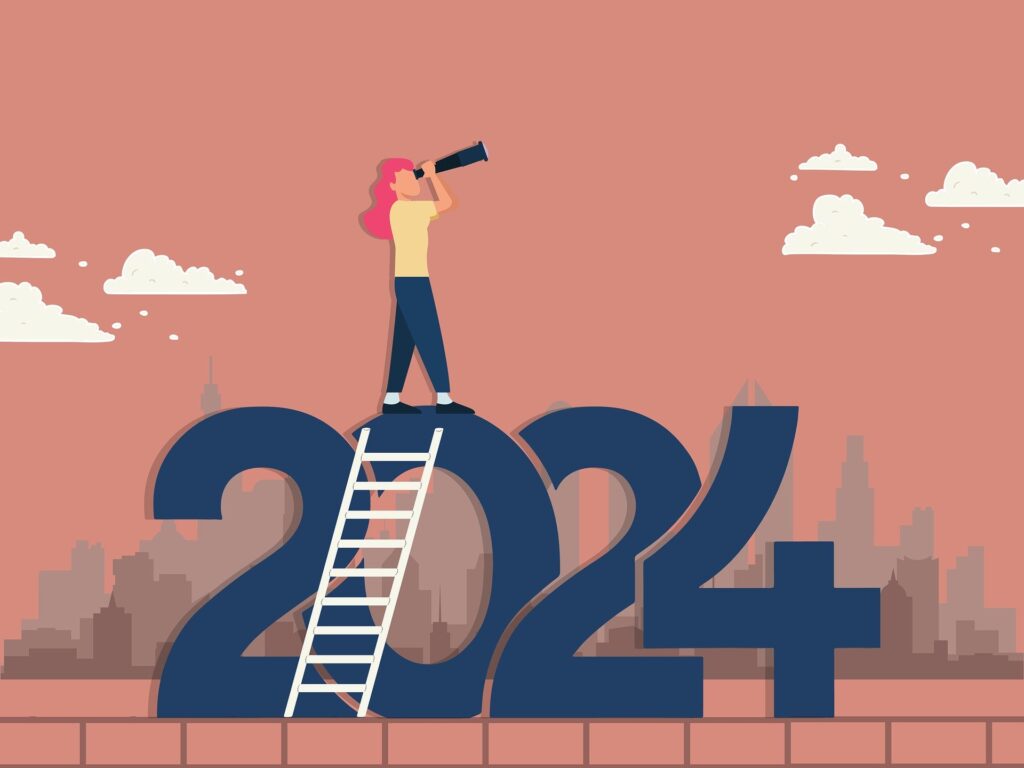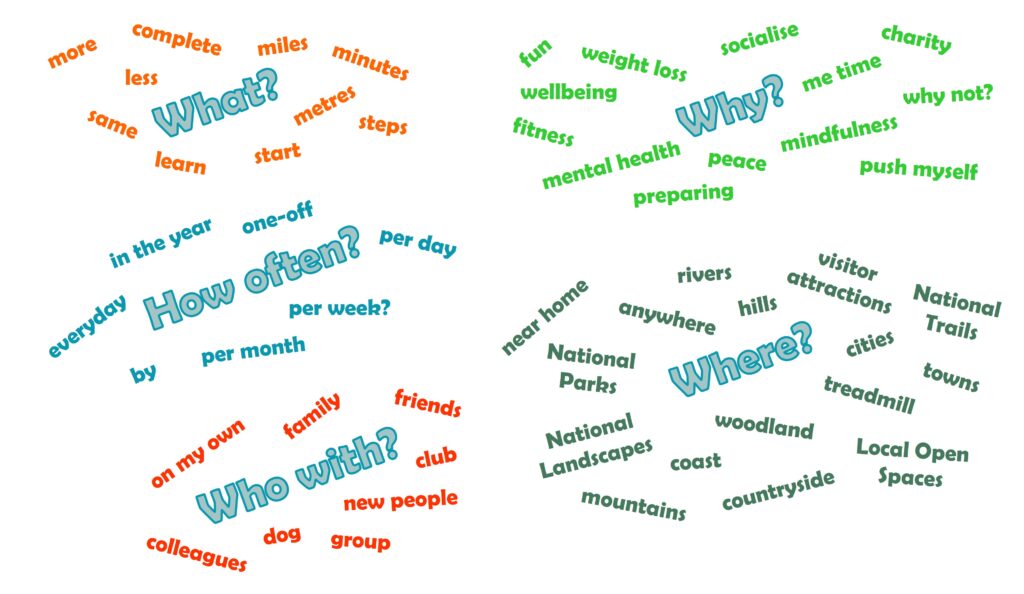Happy New Year. January 2024! For many changing the calendar provides new momentum and an opportunity to look ahead and imagine what will (or could) be over the next 12 months. Many will make a commitment to themselves to do something, stop something, change something or to keep doing what already works. Walking is a popular focus of New Years’ resolutions – for new and seasoned walkers.
Of course goals can be set at any time of the year, but two surveys taken in November 2023 suggested that between one-third (30%) and two-thirds (66%) of people in the UK intended to set New Year’s resolutions for 2024. The most common in both surveys related to improvements in health and well-being. Well then walkers, and soon to be walkers, let’s go!

Walking as a New Year’s resolution
Walking is good for health and well-being so of course a walking New Year’s Resolution is a great one to choose. Walking can contribute to goals for increasing fitness, losing weight, connecting to nature, mindfulness, emotional well-being or getting outside more. Walking can also be just for fun and doing more of what you enjoy – a resolution doesn’t have to be a ‘challenge’ or push you to your limits. There are so many walking goals available, for example:
- Walk a mile a day,
- Walk instead of taking the bus or car,
- Take a stroll from the carpark to a nearby bench once a month in the great outdoors,
- Complete one of the National Trails, the Ravenber Way or other long distance paths,
- Add a walking element to your holidays or days out,
- Reach the summit of a mountain,
- Take a regular lap of a nearby park,
- Walk from somewhere to somewhere else,
- Complete an Ultra Challenge,
- Walk 1000 miles in the year,
- Walk the many and varied trails in National Landscapes, National Parks and the many Open Spaces.
So many to choose from to suit your ability and aspirations. But are resolutions a good idea at all? Many people feel pressured into making resolutions either from others or self – a feeling of what they ought to be doing. If what you are doing now works (or broadly works), then carry on doing that. If there are things you want to improve, then focus on that.

Why New Year’s resolutions fail
Firstly, what is failure? If you set a goal and achieve some of it, well – then at least you did something – let’s celebrate what has been achieved rather than what hasn’t. We don’t know what’s around the corner and priorities change. Though when setting resolutions over-optimism can lead to unrealistic goals and then feelings of failure can be hard to avoid and may be damaging to self-esteem.
An estimated 80% of us will not achieve our New Year’s resolutions and here are some of the reasons:
- The change is too big. Of course, it is possible to make big changes – social media is full of inspirational stories like this – but changing behaviour is hard and likely requires living with discomfort for a long time before the results are anywhere near what is envisaged.
- We don’t know why. Adopting a new behaviour – with all the discomfort that goes with that – is difficult if our heart is not in it or if it’s not the right goal for us.
- We are not ready for the change. There are many stages to making change and jumping in without proper consideration and preparation can mean resolutions are not the right ones and are therefore hard (or unnecessary) to adopt.
- The change is not well defined. ‘Walk more’ or ‘get fitter’ are vague and difficult to work towards as an objective and therefore hard to hold yourself to account.
- Not enough time or money. Common killers of resolutions, kit and travel is expensive and finding the time in a hectic schedule to do more can be hard.

Make walking stick
Here are some ideas to help make your walking resolutions stick:
- Set smaller goals. Take smaller steps (or literally fewer steps!) towards the change you want to see. Don’t plan to summit all 214 Wainwrights in 2024, if you didn’t manage one in 2023. Unless something big has changed then consider that you are working within the same parameters as existed in 2023. Work out what can be adjusted, then plan within those constraints.
- Focus on why. Adopt a resolution to suit the underlying reason. What is it about walking that appeals to you? Why did you choose walking over other physical activities? Is it to get fit? Lose weight? Be outdoors? To get more exposure to nature or moments of joy? Then focus on that goal, walking may only be a part of it.
- Add walking treats. Make walking enjoyable rather than a chore. Where do you feel best when walking? Lakes, mountains, sea, city? Then walk there more. You may benefit more and better stick to your goals by walking in the places that give you most joy rather than daily path stomping for a mile tally.
- Make sure you are ready. Have you thought about what your walking resolution entails – practically and emotionally. Are you up for all that your chosen style of walking might throw at you? Cold, wet, early mornings, the frequency, your health, the exertion required? Prepare and commit to a goal that suits your ability and comfort level.
- Set well defined goals. This post from 2022 describes how to make your outdoor New Year’s resolutions SMART – that is Specific, Measurable, Attainable, Relevant and Time-based.
- Walk within your constraints. Time and money are huge factors in achieving New Year’s resolutions. If you could not find the time or money in 2023 then how will you in 2024? Can you re-prioritise small pockets of time or include walking in your daily routine? Travelling to walking hotspots can be expensive. Look locally for what is available or join walking groups to share travel costs. Walk where the kit you have will safely take you. Borrow or look out for bargains if you need specialist equipment.
And if you are still thinking your resolution over, then maybe the words below will help:

A resolution is your own personal effort. Don’t be bumped by someone else’s dreams into following a challenge that’s not for you. Shape your resolution to what you want and need. Choose wisely to give yourself the best chance of enjoying yourself and achieving your goal. You can always dial it up or down – whatever suits.
Happy walking in 2024!
I’ll share my 2024 walking goal shortly!
Images by RosZie, Mabel Amber, Adam Tumidajewicz and Walking Pace



